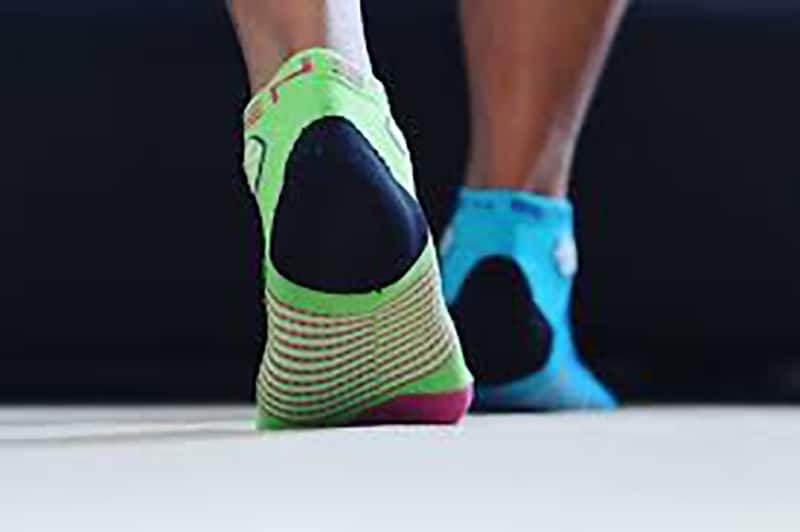01. Cracked heels
Wearing slip on shoes without a back can cause the skin to crack.
To treat mildly cracked heels or dryness, run a pumice stone over them x3 weekly in the shower, but go in one direction as back and forth can actually make the split skin worse.
Conditions such as fungus, psoriasis, thyroid and diabetes are conditions associated with dry, cracked heels so see a Podiatrist at Move if you have any concerns.
Deep cracks can often bleed and lead to pain and infections. Make sure you apply antiseptic ointment and a dry dressing and see a Podiatrist/GP as soon as possible. To avoid dry, cracked heels, it is best to use a foot cream with 10% urea in it. We recommend Ureka, Urederm, Forte mouse.

02. Sweaty feet
Sweaty feet can be a real problem, especially with the hot summers we have in Oz! We suggest wearing socks with natural fibres e.g. bamboo, wool or cotton.
Brew regular black tea and cool, then tuck you feet in for 30 minutes. The tannins in the tea can decrease sweat production.
If you experience blisters with hiking, consider wearing two pairs of socks, toe socks or Steigen socks.

03. Pedicures
I know how nice it is to get your treated with a Pedicure. However, beware of fungal, bacterial, viral infections!! We regularly see fungal infections that are often acquired from getting Pedicures. This could be due to the fact that nail salons are unable to sterilise their instruments.
If you have to get a Pedicure, try and use a reputable salon. Go at the beginning of the day when technicians are less tired and tools and basins are cleaner. Consider taking your own tools and clean at home with betadine after treatment.
Our preference is to paint your own toenails. There are nails polishes that are better for your toenails with tea tree oil (Dr Remedy). Be sure to take the nail polish off after 1-2 days and leave bare for as long as possible.
04. Wear well fitting footwear
It may seem simple to most, however many people put their feet through unwanted stress. Shoes shouldn’t have to be worn in.
You can try lining the shoe with moleskin to prevent friction. Try wearing your shoes at home for 1 hour and increase with time if you have any sensitivities.
If a blister develops, it is best to leave to clean the blister and apply antiseptic e.g. betadine and a dressing. If the blister becomes too painful, see a Podiatrist as the fluid may need to be drained out.
05. Thongs
Over wearing this summertime staple can cause many problems with the feet – fractures, heel pain, tendinopathy, hammertoes. The list goes on!
These are not shoes and shouldn’t be worn from 8am-8pm.
That being said, we do see the need for slip on shoes for in between periods and at home use. So….look for a pair that has good arch support and a thicker sole. We recommend Orthoheels or Birkenstocks.

06. Barefoot walking
I completely agree barefoot walking is invigorating! Who doesn’t love the feeling of crisp grass or sand in between your toes!
However, barefoot walking can also put you at the increased risk of contracting warts, fungal or bacterial infections. These things love warm moist environments like public pools or toilet blocks. You are also at risk of stepping on glass or splinters. So, my advice is to wear something on your feet most of the time in these public spaces and even at home if have problematic feet.





